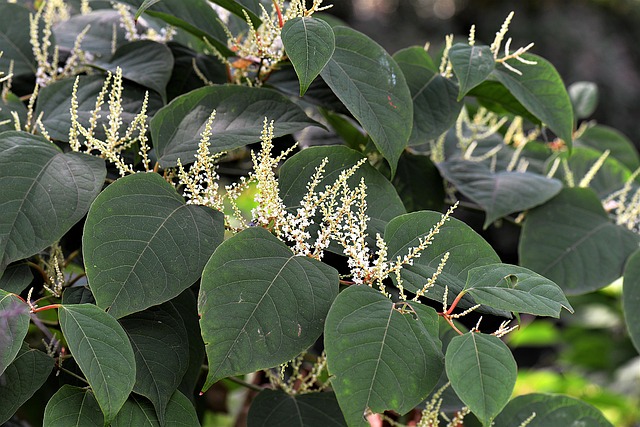
Japanese knotweed is a herbaceous semi-woody perennial plant originally from East Asia. It has spread to mainland Europe, the US, and Oceania. It blooms in summer up to 7ft and dies during winter. It has been labeled as an invasive plant since it prevents any other plants from growing and growing through foundations of buildings and properties damaging property.
Japanese Knotweed has also affected mortgage plans since you have to declare if your home is affected when selling and lenders are more cautious of taking such a house as security due to the damages Knotweed causes. If your house is affected by this, consider insuring your home with insurance firms and Japanese knotweed control companies.
The Japanese knotweed is very hard to remove either by hand or using chemicals. In the UK, it poses a threat to the ecosystem and soil erosion. There are accredited organizations that specialize in the removal of this weed and the Environmental Agency inaugurated an app that has tracked over 6000 locations of the Japanese knotweed.
There are multiple approaches one can take to get rid of Japanese knotweed but it’s important to understand that the roots can grow up to 6 feet deep. Managing the roots can effectively go a long way in eradicating the plant. In addition, identifying the Japanese knotweed early enough, cutting the canes as close as possible to the ground, and applying herbicides are crucial steps to tackle the weed.
Below are ways to remove the weed:
Herbicides
When purchasing a herbicide to kill the knotweed, it is important to get one that does not affect the soil or water bodies. You can buy any Glyphosate-based herbicide as they have proven effective in controlling the Knotweed.
Smother the weed with tarps
You can opt to cover the knotweed with tarps obtained from discount stores during early summer to suppress their growth any further by limiting access to sunlight and water. You need to first cut the plant to the ground before covering them and use herbicides on any sprouts that emerge from the area not covered so that they can transport the herbicide to the Rhizomes underground.
Dig out the rhizomes
You can dig put the Rhizomes and the roots carefully since if you leave any part on the ground the Japanese knotweed will regrow.
Professional services
There are professional Japanese knotweed removers who use professional equipment to dig out the rhizomes. The professionals dig out the entire weed-infested area, remove the soil and plant matter following the disposal guidelines to a site where they are buried and covered in tarpaulin. Other professionals may take the waste to licensed landfills. If you are in need of professional service, just find a knotweed specialist near you
In summary, it is difficult to control the Japanese knotweed at individual levels as it will involve repeating the steps; cutting, mowing, spraying herbicides until the Japanese knotweed has no more energy left to grow. Always use a combination of methods for quicker results and choose organic modes of controlling the knotweed as they are safer for the ecosystem.
It is much better to seek the services of professional Japanese Knotweed removers for the total eradication of the weed as it saves you time and energy. It also ensures your property is in good condition if you were to resell it or mortgage it.